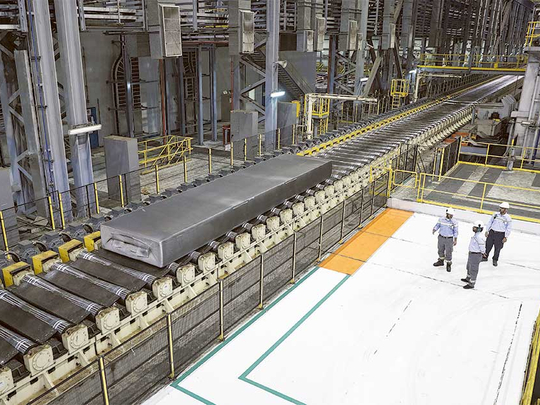
Riyadh: Data released this week by the Saudi central bank show how the economy is still struggling to gain momentum amid low oil prices.
The International Monetary Fund in January slashed its forecast for Saudi economic growth this year to 0.4 per cent from 2 per cent. The government says gross domestic product is likely to expand by more than 1 per cent.
Reserve burn accelerates
Net foreign assets, though still above $500 billion (Dh1.83 trillion), are shrinking as the government uses savings to plug a budget deficit that reached $79 billion last year — $107 billion if delayed payments to contractors are included.
With reserves falling by as much as 3 per cent a month during the worst of the oil rout, the government turned to domestic and then international bond markets to slow the pace. It was only partially successful — the 2.3 per cent drop in January was the most in a year.
“The money from the bond issuance has been mostly utilised,” said Monica Malik, chief economist at Abu Dhabi Commercial Bank. As a result, selling foreign securities, along with tapping deposits held with foreign banks, has become “one of the main ways of funding the deficit,” she said.
Less government borrowing
Bank claims on the public sector rose sharply in 2015 and 2016 as the government sold a series of local bonds to finance spending. But a liquidity squeeze in the banking system, partly caused by the sales, led the central bank to intervene last year with cash injections and easier lending rules.
Since then, the government has avoided issuing debt locally, and bank claims on the public sector even fell slightly in January. The government is “likely looking to support domestic banking sector liquidity,” Malik said.
Slowing credit growth
Bank claims on the private sector — largely composed of loans, advances and overdrafts — grew 1.8 per cent in January compared to a year earlier. That’s the lowest year-on-year growth since February 2010, according to data compiled by Bloomberg.
“Firms have scaled back investment plans and so there’s less need for them to turn to bank credit to finance that,” said Jason Tuvey, Middle East economist at Capital Economics in London.
Weaker import demand
Amid the economic uncertainty, demand for imports financed by commercial lenders is also falling. The value of new letters of credit opened to bring in items including food, cars, clothing and building materials dropped by more than 20 per cent in January compared to a year earlier.
The data is partly explained by the government paying back contractors, but it’s also due to a “cautious approach by the private sector,” Malik said.












